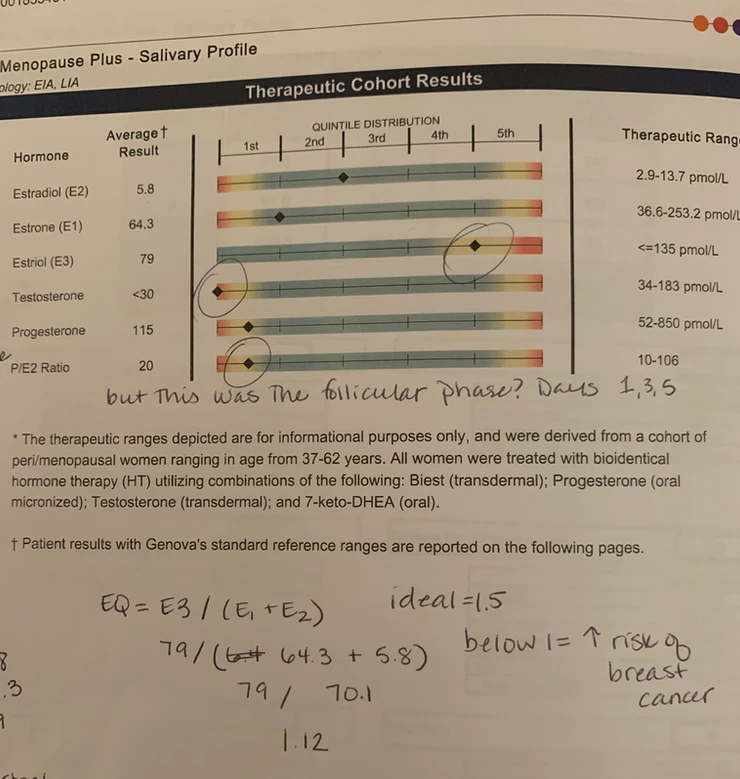Hormone balance is a big issue with many women. Heavy menstrual cycles, PMS symptoms like bloating, mood swings, and cramping can leave so many of us looking for answers. The answers can often be found in asking questions that give us information on what our individual hormone levels look like. I really like to use saliva testing for hormones as they measure the level of active, useable amounts of hormones. In blood testing, the hormones are bound to proteins and this is not the active form of the hormone. Saliva testing is easy to do, also. Hormone testing is usually best done in conjunction with stress hormone testing so we get a clear picture of what is going on.
Many people do not know that there are actually 3 types of estrogen. Each type of estrogen has a distinct role.
Estrone (E1) is produced in your liver and fat cells. As women hit menopause, this is the main type of estrogen produced. Excess body fat levels can increase the production of this type of estrogen as well. In addition, xenoestrogens (estrogen-mimicking things like plastics, chemicals, etc) and heavy metals or other toxins can increase E1 levels.
Estradiol (E2) is the most common form of estrogen. It is produced by the ovaries. It plays a role in healthy bones, skin and hair. It also helps regulate sleep, sex drive, and energy levels. It helps keep mucous membranes moisturized. Estradiol has a strong growth-stimulation property, so excess levels of E2 have been linked to cancers of the breast, uterus and ovaries.
Estriol (E3) is produced in the breast and liver cells. This is a protective form of estrogen that helps keep the other forms in check. This is the type of estrogen that elevates greatly during a woman’s pregnancy.
If you test your hormones, you will want to test the subtypes of estrogen to know what their relationship to one another is. If you know this, you can determine if you have a healthy balance.
Dr. Henry Lemon, an estrogen researcher, came up with something called the Estrogen Quotient. By taking E3 / (E1+E2) you can calculate your Estrogen Quotient or EQ.
If your number is below 1.0 your risk of developing breast cancer is greater than if the ratio is over 1.0. Dr. Lemon believed an ideal EQ was > 1.5
If you are concerned about estrogen dominant symptoms like uterine fibroids, heavy bleeding, fibrocystic breasts, painful PMS, etc. or have a family history of breast, uterine or ovarian cancer, you may want to have your levels tested.
I hope you found this information helpful!
Dr. Jeni



